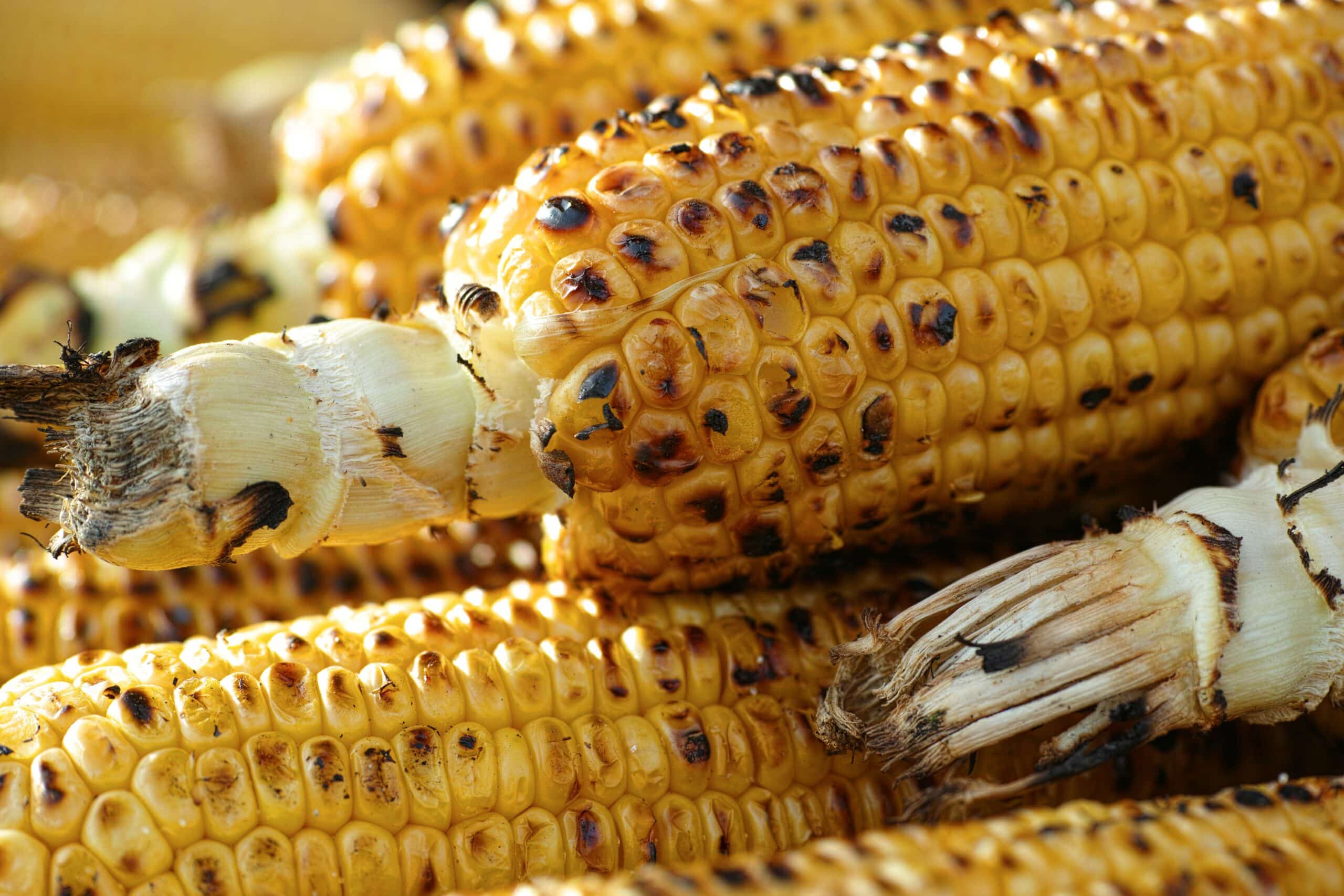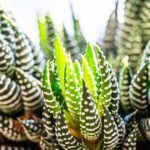If you’re looking to spruce up your home, why not consider growing a corn plant (Dracaena)? This popular houseplant is easy to care for and can liven up any room. In fact, according to the National Gardening Association, it is the second most popular houseplant in the US! So why not take a few minutes and learn how to grow and care for this beautiful plant?
Growing a corn plant indoors is fairly simple and requires minimal effort. All you need is some potting soil, a container with drainage holes, and of course the Dracaena. You should also make sure that your chosen spot gets plenty of indirect sunlight—this will help keep your Dracaena healthy and happy. Once planted, all that’s left to do is water regularly (but don’t overwater) and dust off the leaves from time-to-time.
The best part about caring for a Dracaena? It is incredibly low maintenance! Other than occasional pruning or repotting when necessary, there isn’t much else you need to do in order to keep it thriving indoors. With just a little bit of love and attention, your corn plant will be sure to bring life into your home!
What Is A Corn Plant?
The corn plant (Dracaena fragrans), is an elegant, lush and verdant addition to any living space. It is a tropical evergreen that can bring a touch of the outdoors inside with its glossy, variegated leaves and woody stem. This resilient houseplant is easy to care for and can thrive in many different environments, making it an ideal choice for both experienced gardeners and novice green thumbs alike.
Native to tropical Africa, this houseplant loves warm temperatures; however, it can also tolerate lower light levels which makes it an ideal choice for those without access to a lot of natural sunshine. While Dracaena fragrans prefers moist soil, it has a strong tolerance for drought-like conditions which allows it to go longer between waterings. Additionally, fertilizer is only needed sparingly throughout the year to give this hardy plant the boost it needs during periods of growth.
This magnificent houseplant may be a slow grower but with proper care and maintenance its striking foliage will soon become the focal point of any room. With its low light requirements and resilience against drought-like conditions, the corn plant offers an easy way to add some greenery indoors–no matter one’s level of gardening experience!
Where Can A Corn Plant Be Grown?
Surprisingly, the corn plant is a houseplant that can be found in homes all over the world. In fact, according to one study, it was estimated that around 80% of households have grown a corn plant indoors. With its bright green leaves and long-lasting flowers, it’s no wonder why this plant has become so popular over the years.
When it comes to growing a corn plant, there are several options available. It can be planted outdoors in warm, humid climates or can be kept indoors all year round. When placed outdoors, it should be located in indirect sunlight and watered regularly when the soil becomes dry. Indoors, you’ll want to place it in an area with lots of natural light and keep soil moist but not soggy.
It’s also important to remember that corn plants need regular pruning and fertilizing in order to stay healthy. Pruning should be done every few months to encourage new growth and fertilizing should take place once per month with a balanced fertilizer formulated for indoor plants. With proper care and attention, your corn plant will thrive and provide beautiful foliage for years to come!
What Are The Benefits Of Growing A Corn Plant?
Growing a corn plant, or Dracaena fragrans, is a great way to bring a touch of the outdoors into your home. Not only does this plant look beautiful and can add color to any room, but it also has several other benefits. Caring for this plant is relatively easy and requires minimal effort.
The most obvious benefit of growing a corn plant is its aesthetic appeal. The long leaves of the corn plant come in a variety of colors, including dark greens with white stripes, yellow-green stripes and even hints of pink or red on some varieties. This makes it an ideal choice for adding a pop of color to any room in your home. On top of that, it’s easy to maintain since they require little pruning and waterings only every few weeks.
On top of being visually appealing, the corn plant is also known for its air purifying abilities. By helping to filter out toxins like benzene and formaldehyde from the air around you, it can help make your living space healthier and more comfortable for you and your family members. It’s an added bonus that this air cleaning process doesn’t require any extra effort on your part beyond what you’d normally do for regular care!
These are only some of the benefits that come with growing a corn plant in your home or office space. With so much to offer at such low maintenance requirements, it’s no wonder why more people are turning to this easy-care houseplant as their go-to choice when decorating indoors! So now that we know why the corn plant makes such an excellent addition to any indoor space, let’s move on to explore how much sun this type of houseplant needs in order to thrive.
How Much Sun Does A Corn Plant Need?
Have you ever wondered how much sun a corn plant needs? Sunlight is essential for the growth of plants, and this includes dracaena fragrans. This particular species requires bright, indirect sunlight in order to thrive indoors. If the light is too intense, it can lead to leaf burn or yellowing leaves.
The best way to ensure that your corn plant is getting enough sunlight is to place it in a spot that receives some natural light from a window, but not direct sunlight from a south-facing window. If there’s not enough natural light, then supplement with artificial lighting. You also need to make sure that the plant isn’t exposed to drafts from air conditioning or heaters.
By monitoring how much sun your corn plant is receiving and providing the right amount of indirect light, you are setting yourself up for success in growing this beautiful houseplant. With proper care and attention, your dracaena fragrans will reward you with lush foliage and long lasting beauty! Now that we’ve discussed the importance of sunlight for your corn plant, let’s move on to discuss something else important–how to pot a corn plant correctly.
How To Pot A Corn Plant
What a coincidence it is that I’m writing about how to pot a corn plant! Just the other day, I was thinking of ways to add some greenery to my home and this topic popped up just in time. It’s amazing how our needs are always so perfectly met.
Potted corn plants are quite easy to take care of as long as you follow the instructions closely. The most important step is to choose an appropriately sized pot; it should be only slightly larger than the existing root ball and have drainage holes at the bottom. For best results, use a lightweight potting mix instead of regular soil. Once you have your materials, start by adding an inch or two of soil into the bottom of your pot before placing your plant in it. Gently backfill the rest of the soil around your plant and lightly tamp down for stability. Finally, water generously but don’t overdo it – allow excess water to drain out through the drainage holes before discarding it.
Now that you know how to properly pot your corn plant, let’s look at what type of soil is best for its growth and health.
What Soil Is Best For A Corn Plant?
You may be wondering why it is important to use the right soil for your corn plant. Well, apart from being an essential element in the growth and health of any plant, soil can also affect how well your corn plant thrives. Fortunately, there are a few simple steps that you can take to get the best soil for your corn plant.
When it comes to potting soil for a corn plant, you want something that is fast-draining and has plenty of organic material. A combination of peat moss and perlite is ideal because it retains moisture while still allowing air to reach the roots. Additionally, adding a bit of compost or worm castings will provide extra nutrients for your corn plant. Be sure not to over-fertilize as this could cause root burn or other damage.
Finally, once you have chosen the right soil mix for your corn plant, make sure to give it enough room in its pot so that its roots have space to grow without becoming cramped or waterlogged. You should also use a pot with drainage holes so that excess water can escape and not sit around the roots of your corn plant. With these tips in mind and some regular care, you can ensure that your corn plant gets off to a good start! With proper watering, your corn plant will soon be thriving indoors all year round –bringing a touch of the outdoors into your home.
How To Water A Corn Plant
Watering your corn plant is a vital part of its care. It needs to be done right or else the plant can suffer. But don’t worry, it’s not difficult! Here’s what you need to know when watering your dracaena fragrans.
First off, you’ll want to make sure that you’re using room temperature water – no cold water here! Cold water can shock the roots and hurt the plant. You’ll also want to avoid any kind of hard water. Soft water is best for your corn plant.
Once you have the right kind of water, it’s time to determine how often you should be watering your dracaena fragrans. This will depend on how much light and humidity the plant is getting, but generally speaking, once every seven to fourteen days should do the trick. When it comes time to actually watering your corn plant, make sure that you give it enough so that all of the soil gets wet – but not too much as this could cause root rot or other problems.
By following these simple steps for watering your corn plant correctly, you can ensure that it will remain healthy and thrive for years to come! Now that we’ve covered how to properly water a dracaena fragrans, let’s move onto how to fertilize one…
How To Fertilize A Corn Plant
One statistic that stands out when it comes to growing a corn plant is that the average lifespan of this houseplant is over 10 years. With proper care and maintenance, this exotic looking plant can bring joy and greenery to any home for many years.
When it comes to properly caring for a corn plant, fertilizing plays an important role in its growth and development. As with any other type of plant, fertilizer helps a corn plant grow bigger and stronger, while promoting healthy foliage. To fertilize the corn plant, mix a half-strength liquid fertilizer into its water every two weeks during the spring and summer months. During the fall and winter months, reduce fertilization to once per month or less. It’s important to not over-fertilize as this can cause damage to the leaves due to the harsh chemicals found in some fertilizers.
When selecting a fertilizer for your corn plant, make sure that it is specifically formulated for houseplants as opposed to outdoor plants; these will contain fewer harsh chemicals than those made for use in a garden setting. Additionally, be sure to read all instructions on the label before applying the fertilizer so that you can be sure you’re using it correctly.
By following these steps, your corn plant will be able to get all of the nutrients it needs while also avoiding being damaged by harmful chemicals found in some fertilizers. With proper care and attention, your corn plant will continue to thrive year after year! Now let’s turn our attention towards pruning this beautiful houseplant so that it can reach its full potential.
How To Prune A Corn Plant
The care of any houseplant requires some attention to pruning, and a corn plant is no different. Coincidentally, it just so happens that pruning a corn plant actually helps it to stay healthy and grow. Proper pruning can also help to maintain the desired shape of the plant, making it an essential part of caring for this particular type of houseplant.
When it comes to pruning your corn plant, you’ll want to start by removing any yellowed or dead leaves. If the leaves have turned brown or yellow and are limp or droopy, then they will need to be removed as soon as possible. You’ll also need to remove any dead or dying stems and shoots from the base of the plant. This will help encourage new growth in the area.
In addition, when pruning your corn plant you should always use clean, sharp scissors or shears. This will help ensure that you don’t damage any healthy parts of the plant while trimming away dead leaves and stems. When trimming off pieces of the corn plants, try to leave at least two sets of leaves on each stem so that it can keep growing healthily. Pruning your corn plants regularly will help them look their best and stay healthy for years to come.
With proper pruning now complete, our next step is how to control pests on a corn plant.
How To Control Pests On A Corn Plant
Pest control is an important part of taking care of a corn plant. If left unchecked, pests can quickly spread and cause damage to the plant. Fortunately, there are several ways to control pests on a corn plant.
The first step in controlling pests on a corn plant is to identify the type of pest and determine what kind of damage it’s causing. Once identified, the most effective way to control pests is by using natural methods such as insecticidal soaps or horticultural oils. These products are applied directly to the plant and can help reduce pest populations without harming beneficial insects or animals. It’s also important to keep your corn plant clean by removing dead leaves and debris which can harbor pests.
Finally, if all else fails, you may need to use chemical treatments such as insecticides or fungicides. However, these should only be used as a last resort since they can be hazardous to both humans and the environment. Before using any type of chemical treatment, always read the instructions carefully and follow any safety guidelines provided by the manufacturer. With proper identification and treatment, you can keep your corn plant healthy and pest-free!
How To Propagate A Corn Plant
Propagating a corn plant (Dracaena fragrans) can be an incredibly rewarding experience. To do so, one must first understand the fundamentals of horticulture and the needs of this particular species. Thankfully, with some patience and skill, it is entirely possible to cultivate a second Dracaena fragrans from a single cutting! Utilizing the power of persuasion, let us explore how one might go about doing just that.
First off, it’s important to recognize that the process of propagating Dracaena fragrans should only be attempted during its active growing season in late spring or early summer. Furthermore, the best cuttings for propagation are taken from hardwood stems that are at least two years old; these should be around five inches in length and still possess some healthy green leaves. With these prerequisites satisfied, one can now begin the propagation journey.
To start, it is necessary to take a sharp pair of scissors or pruning shears and make an angled cut just below a node (a point where leaves attach). This will ensure that there is enough surface area for roots to form while providing adequate nourishment for growth. The cutting should then be placed into soil or water so that it may begin rooting. If placed into soil, then regular watering is essential; if rooted in water, then frequent changes will help ensure proper growth. Either way, within several weeks the cutting should have developed new roots and can thus be repotted into fresh soil as its own individual plant!
With careful tending and plenty of patience, anyone can successfully propagate their own Dracaena fragrans—allowing even more people to enjoy this incredible species! Now that we’ve understood how to propagate a corn plant properly let’s take a look at common problems associated with this species’ cultivation.
Common Problems With Corn Plants
Growth and care of corn plants (Dracaena) is a delicate process, requiring patience and dedication to ensure their health. However, even with the best care, common problems can arise that can cause issues with growth. To ensure your corn plant is healthy and thriving, it’s important to understand some of these common issues.
One of the most frequent problems seen in corn plants is root rot, which occurs when the roots are exposed to too much moisture for too long. The symptoms include wilting leaves, yellow foliage, and drooping growth. Additionally, overwatering can lead to root rot as well as other fungal diseases like powdery mildew or leaf spot. Fortunately, these problems can be addressed by adjusting watering habits and ensuring there is proper soil drainage.
Another issue that corn plants may encounter is nutrient deficiencies such as magnesium or iron deficiency due to lack of fertilization or poor soil quality. These deficiencies usually manifest as yellowing leaves with stunted growth. To prevent this from happening, fertilize your plant regularly using a balanced fertilizer that contains all necessary nutrients in the right proportions and avoid over-fertilizing.
With a better understanding of potential issues that may affect your corn plant’s health, you’ll be better equipped to recognize signs of stress early on and take corrective action before it becomes a bigger problem.
How To Recognize Signs Of Stress In A Corn Plant
Struggling to spot signs of stress in a corn plant? Noticing the nuances is necessary for nurturing and keeping your beloved indoor greenery thriving. This section will help you recognize the warning signs so that you can take steps to restore your corn plant’s health.
First, familiarizing yourself with the fragrant foliage’s needs is paramount for protection. Ideally, you should provide it with bright but indirect sunlight, water when the top two inches of soil are dry, and fertilizer every two months during active growth. If these requirements aren’t met, the plant could be at risk for distress.
Signs of stress may manifest in various forms, from droopy leaves to brown tips or dead patches. Additionally, yellowing leaves or leaf drop could be an indication that something is amiss with its environment. Pay attention for any changes in color or texture that don’t seem normal – this could indicate an issue with its care routine.
Being observant and proactive is key to ensuring that your corn plant stays happy and healthy indoors. With just a little extra diligence and attention to detail, you can revive it if any signs of stress arise!
How To Revive A Corn Plant
As a gardener, there’s no more disheartening sight than watching your beloved corn plant wither away. Thankfully, with the right care and attention, most corn plants can be revived. Here’s how you can bring yours back to life.
For starters, make sure you’re giving it the light it needs; dracaena fragrans is a low-light tolerant species, but it still needs some light for photosynthesis. Move your corn plant to an area with bright indirect sunlight or near a window facing east or west.
It’s also important to give your corn plant the proper hydration – too little or too much water can lead to drooping leaves and root rot. Let the soil dry out between waterings and always check that the pot has drainage holes at the bottom so excess water doesn’t build up in the soil. If needed, repot your corn plant in fresh soil and trim any dead or decaying roots before replanting.
With a few simple steps, you can help your corn plant thrive again – just give it time and don’t be afraid to experiment with different watering frequencies and light sources until you find what works best for your particular plant!
How To Dispose Of A Corn Plant
It’s better to be safe than sorry.” When it comes to taking care of your corn plant (dracaena), following this adage is essential. While improper disposal of a corn plant can lead to potential health risks, proper disposal can help protect your family and the environment. In this article, we’ll discuss how to dispose of a corn plant in the safest way possible.
When it’s time to discard a corn plant, there are several steps you should take. First, remove any soil from the root system and rinse off any remaining dirt or debris. Then, cut off any brown or dead leaves and stems using sterilized pruning shears. Carefully place the cuttings into a sealed plastic bag and discard them in an appropriate waste container. You may also want to consider composting these cuttings if they have not been exposed to any chemicals or fertilizers.
Finally, if you have an old pot that was used with your corn plant, make sure it is thoroughly washed before being reused for another type of houseplant. Additionally, if you need to get rid of the pot for any reason, make sure you recycle it by taking it to your local recycling center or donating it to someone who can use it for their own plants!
Disposing of a corn plant correctly ensures that you and those around you are kept safe from potential health risks and that the environment is protected from unnecessary pollution. Taking the necessary precautions when disposing of your dracaena can save everyone some headaches in the long run!
Frequently Asked Questions
What Kind Of Light Is Best For A Corn Plant?
When caring for a corn plant (dracaena), it’s important to understand the type of light it needs for optimal growth. A case study of one family’s experience with their corn plant is a great example of this. The family had placed their plant near a window, thinking it was getting enough light, but soon realized the leaves were starting to yellow and droop. After doing some research, they learned that corn plants thrive in bright, indirect sunlight and need at least six hours of light each day.
To ensure your corn plant gets the best possible conditions for growth, place it somewhere that receives bright, indirect sunlight from a south-facing window or fluorescent lighting. If you’re using fluorescent lighting, position the fixture approximately 12 inches above the top of the plant and leave it on for about 14 hours a day. Keep in mind that direct sunlight can be too intense for your corn plant, so make sure there are no curtains or blinds blocking the window to prevent sunburn on its leaves.
It’s also essential to make sure your corn plant isn’t exposed to excessively cold temperatures or drafts from air conditioners or fans. To protect your plant from these elements, keep it away from any vents and open windows during winter months. Additionally, maintain an indoor temperature between 65–75°F and water your corn plant when the soil is dry to prevent overwatering which can cause root rot. With proper care and attention, your dracaena should stay healthy and continue growing strong!
Can A Corn Plant Be Grown Outdoors?
Corn plants (Dracaena Fragrans) have become increasingly popular houseplants in recent years, but can they be grown outdoors? Well, the short answer is yes—but with some important caveats.
To begin with, it’s important to remember that corn plants are tropical and subtropical plants; they aren’t used to cold weather. So if you want to grow a corn plant outdoors, you’ll need to make sure you live in an area where temperatures don’t dip below 55°F at night—otherwise your plant is likely to suffer from frostbite.
In addition, outdoor corn plants will need some extra special care. These plants prefer bright, indirect sunlight and plenty of water—so you’ll need to make sure your outdoor corn plant has enough shade and access to water throughout the day. If you’re not able to offer these things, then it’s probably best to keep your corn plant indoors.
In other words, if you live in an area with warm temperatures and plenty of light and water for your outdoor corn plant—you might just have a winner on your hands! But if not, it may not be worth taking the risk.
How Often Should A Corn Plant Be Repotted?
Caring for a corn plant (Dracaena fragrans) indoors can be an enjoyable experience with the right know-how. Repotting is an integral part of keeping this houseplant healthy and happy – but how often should it be done? A regular repotting routine is key to ensuring that your corn plant flourishes.
First, you’ll want to assess the size of the current pot. If your corn plant is sitting in a cramped container, it’s time to give it more space. When potting or repotting, make sure that you use fresh soil and a slightly larger container than the one it was previously in. Generally speaking, Dracaena fragrans should be repotted about every two or three years when grown indoors.
With proper care and attention, your corn plant will continue to bring life and greenery into your home for many years to come! Be sure to keep an eye out for signs that indicate it’s time for a repot – such as when the roots start appearing out of the drainage holes – so that you can ensure your beloved houseplant continues to thrive.
What Temperature Should A Corn Plant Be Kept In?
When it comes to caring for a corn plant, one of the most important factors is temperature. It’s essential to ensure that your corn plant is kept at the right temperature in order to ensure its health and growth. Generally, a corn plant should be kept in an environment where temperatures range from 70-80 degrees Fahrenheit during the day, with night temperatures dropping by 5-10 degrees. A corn plant will not tolerate cold temperatures and should not be exposed to temperatures lower than 50 degrees Fahrenheit.
Another factor to consider when caring for your corn plant is humidity. Your plant prefers a more humid environment, so it’s important that you keep it in an area with good air circulation and mist regularly. If your home tends to be dry, you may need to purchase a humidifier or keep your corn plant near a water source like the bathroom or kitchen sink.
By providing your corn plant with the right temperature and humidity levels, you’ll be well on your way to having happy and healthy plants! Taking care of these two elements will help ensure that your corn plant grows well into adulthood and lives a long life. So don’t forget about this important part of caring for your corn plant – temperature and humidity are key!
Is A Corn Plant Toxic To Pets?
Did you know a corn plant, also known as Dracaena Fragrans, could potentially be toxic to pets? It’s true! According to the American Society for the Prevention of Cruelty to Animals (ASPCA), this popular houseplant can cause vomiting and depression in cats and dogs if ingested.
It’s important to note that while these plants may be toxic if eaten, they are still a great addition to your home. They require minimal care and can add a touch of greenery indoors. In addition, they can help purify the air by removing toxins such as formaldehyde.
So if you have cats or dogs as pets, take extra precaution when introducing a corn plant into your home. Keep it out of reach from curious mouths and paws. Place it high up on shelves or counters where curious creatures won’t find them easily. With a little bit of thought and effort, you’ll be able to enjoy your corn plant without putting your furry friends at risk.
Conclusion
In conclusion, the Corn Plant (Dracaena fragrans) is a hardy and attractive houseplant that can thrive indoors with proper care. When it comes to lighting, the Corn Plant should be kept in indirect sunlight or fluorescent light for best results. It should not be kept outdoors as it cannot tolerate extreme temperatures or direct sunlight. Repotting should only occur when needed, usually every two to three years. Temperature wise, the Corn Plant does best between 65-85°F (18-29°C). Finally, the Corn Plant is toxic to pets if ingested, so keep it away from any curious animals.
With just a little bit of effort and love, you can nurture your very own Corn Plant in your home or office. With its lush foliage and vibrant colors, the Corn Plant will add a touch of life and color – “a ray of sunshine” – to any space. Just remember to provide adequate light and temperature conditions as well as regular watering and fertilizing to ensure it grows happily and healthily.





























